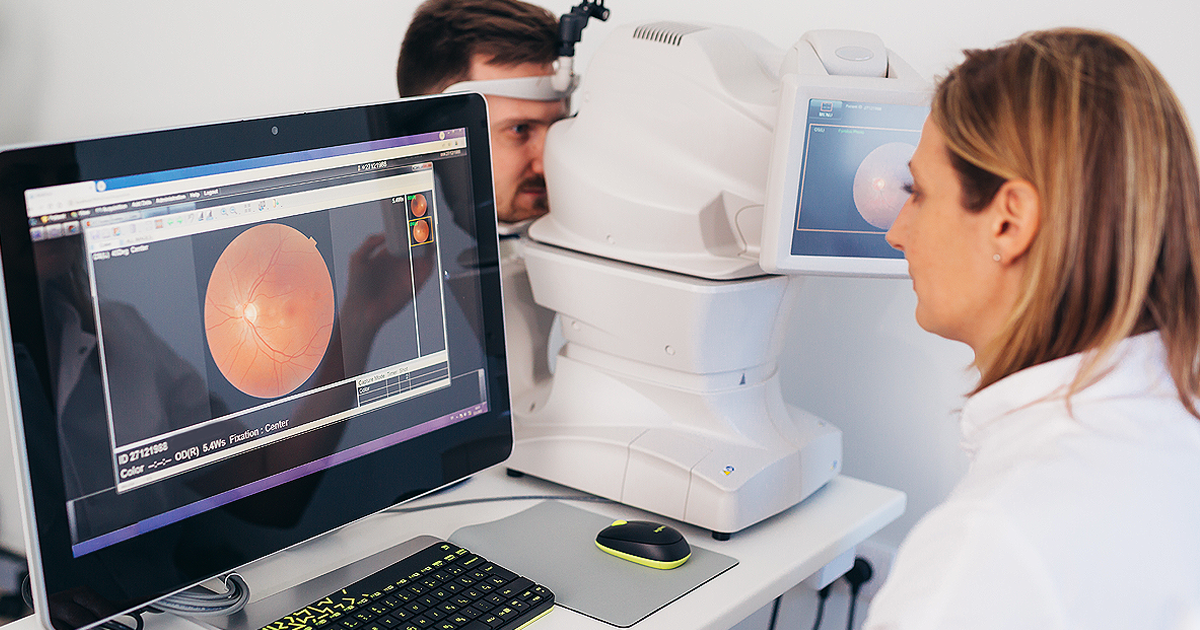With aging comes wisdom, experience and—as much as we hate to admit it—a higher risk of certain health issues. When it comes to vision, the older you are, the more likely you are to develop glaucoma. (1) So Healthy Aging Month, as observed by the American Academy of Ophthalmology, provides a good reminder to make sure your employees know about the condition and understand how important it is to get a comprehensive, dilated eye exam every year.
What is glaucoma?
Glaucoma is the #2 worldwide cause of preventable blindness, yet it has virtually no symptoms, according to The Glaucoma Research Foundation. (1) In fact, it can steal 40% of your eyesight before you even realize it. (2) More than 3 million Americans are afflicted with glaucoma, which damages the optic nerve, yet only half are aware of it. (1) That’s because loss of sight starts with peripheral vision, which makes it harder for people to realize it’s happening. (1) And unfortunately, there is no cure. Once vision is gone, it’s gone for good. (1)
A few other facts that underscore its prevalence:
• The National Eye Institute projects the number of Americans with glaucoma will reach 4 million by 2030 and 6 million by 2050. (3)
• African Americans are 6-8 times more likely than Caucasians to develop glaucoma. (1)
• Other high-risk groups include people over the age of 60, diabetics, individuals with a family history of glaucoma and people of Asian or Hispanic heritage. (2)
What you can do about it
The National Eye Institute shares 2 major risk factors for glaucoma, eye pressure and blood pressure. One of those, eye pressure, is measured during a comprehensive, dilated eye exam. A dilated exam makes it possible for an eye care professional to establish a patient’s baseline pressure level while also checking for other risk factors, such as cornea thinness or abnormal optic nerve anatomy. (4)
Although glaucoma cannot be cured, it can be treated. And as with most medical conditions, early diagnosis leads to better outcomes, such as preserving a patient’s remaining vision and slowing the disease’s advance. With that in mind, encourage your employees to make use of their vision benefits and to view a comprehensive, dilated eye exam as essential to their good health.
To get a better idea of the effects of glaucoma, you and your employees can check out EyeMed’s eye condition simulator, then read this article to learn more about vision issues to look for in aging eyes.
Once you get all the facts, we know you’ll agree: Protecting your eyesight never gets old.
BL-1809-CB-850
1. Glaucoma Research Foundation, “Glaucoma Facts and Stats,” 2017. Accessed Aug. 23, 2018.
2. Glaucoma Research Foundation, “January is Glaucoma Awareness Month,” 2018. Accessed Aug. 23, 2018.
3. National Eye Institute, “Learn about Glaucoma.” Accessed Aug. 23, 2018.
4. National Eye Institute, “Facts about Glaucoma.” Accessed Aug. 23, 2018.




